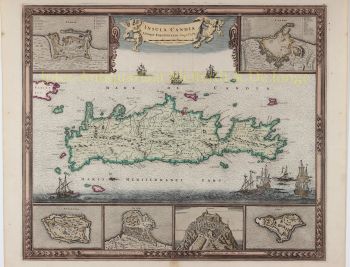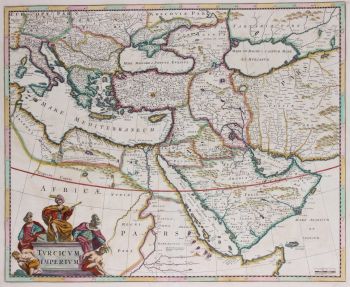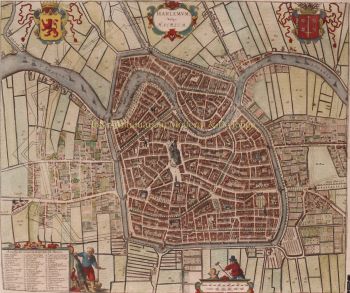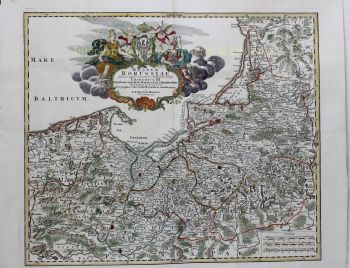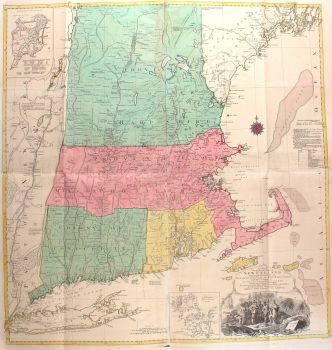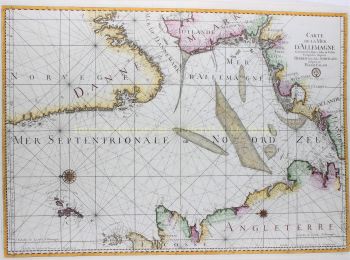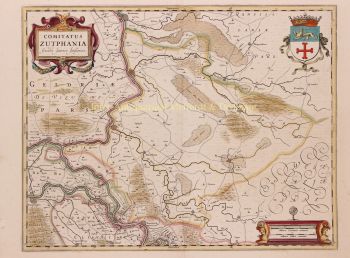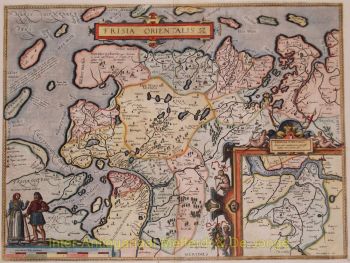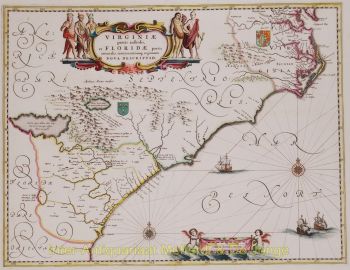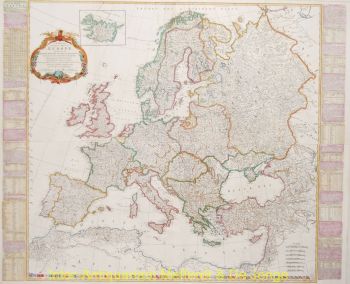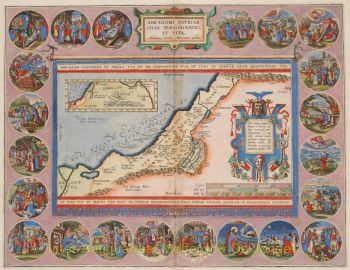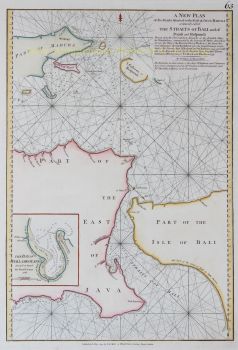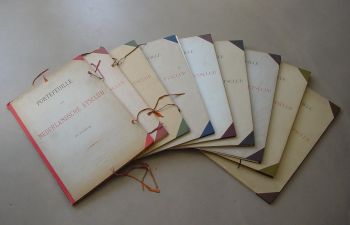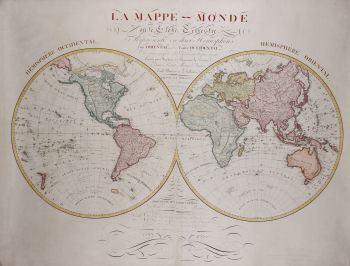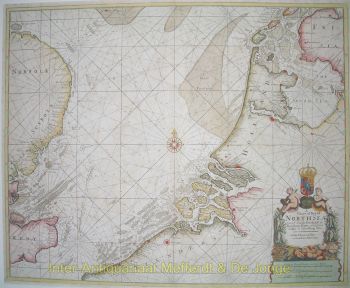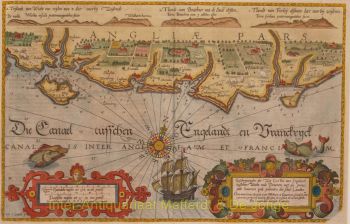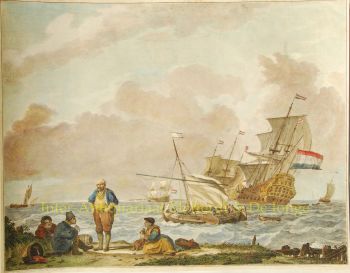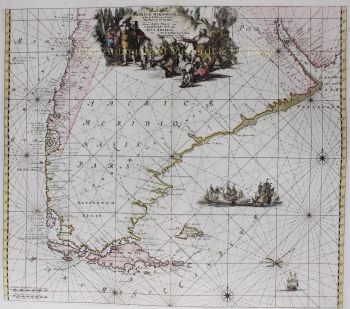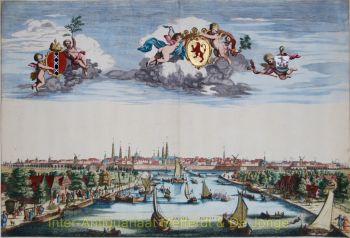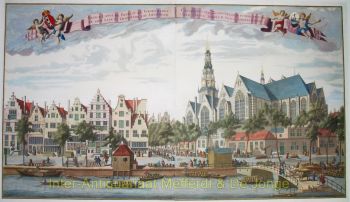Ásia 1670
Frederick de Wit
€ 575
Inter-Antiquariaat Mefferdt & De Jonge
- Sobre arteNICE EXAMPLE OF DE WIT'S MAP OF ASIA "Accuratissima totius Asiae Tabula in Omnes Partes divisa, de novo Correcta " [Newly corrected, very accurate map of Asia, divided in all parts], copper engraving published approx. 1670 by Frederic de Wit of Amsterdam. Coloured by a later (?) hand. Size: 49 x 58 cm. The extent of European knowledge of the region is depicted with good detail throughout the south and south east, based on the surveys of the Dutch East India Company, while northern and central Asia is filled mostly with mountains and forests and shows the coastline of Yedso [the island of Hokkaido] above Japan. The work of the Jesuit missionaries is reflected in the well-documented region of China. In the lower right corner there is the northern part of Hollandia Nova (Australia) and a hint of New Guinea. The large title cartouche shows a busy scene with traders and their cargo. The copper plate of Frederick de Wit's map was used by the Danckerts publishing family for a reprint a few years later. Price: Euro 575,-
- Sobre artistaFrederik de Wit nasceu Frederik Hendriksz. Ele nasceu em uma família protestante por volta de 1629, em Gouda, uma pequena cidade na província da Holanda, uma das sete províncias unidas da Holanda. Seu pai Hendrik Fredericsz (1608 - 29 de julho de 1668) era um hechtmaecker (fabricante de cabo de faca) de Amsterdã, e sua mãe Neeltij Joosten (falecida antes de 1658) era filha de um comerciante em Gouda. Frederik casou-se em 29 de agosto de 1661 com Maria van der Way (1632–1711), filha de um rico comerciante católico em Amsterdã. De cerca de 1648 até sua morte no final de julho de 1706, De Wit viveu e trabalhou em Amsterdã. Frederik e Maria tiveram sete filhos, mas apenas um Franciscus Xaverius (1666-1727) sobreviveu a eles. Em 1648, durante o auge da Idade de Ouro holandesa, De Wit mudou-se de Gouda para Amsterdã. Já em 1654, ele abriu uma gráfica e loja com o nome de "De Drie Crabben" (os Três Caranguejos), que também era o nome de sua casa na Kalverstraat. Em 1655, De Wit mudou o nome de sua loja para "Witte Pascaert" (a Carta Branca). Com esse nome, De Wit e sua empresa tornaram-se conhecidos internacionalmente.
Você está interessado em comprar esta obra de arte?
Artwork details
Categoria
Related artworks
- 1 - 4 / 4
- 1 - 4 / 24
- 1 - 4 / 12


